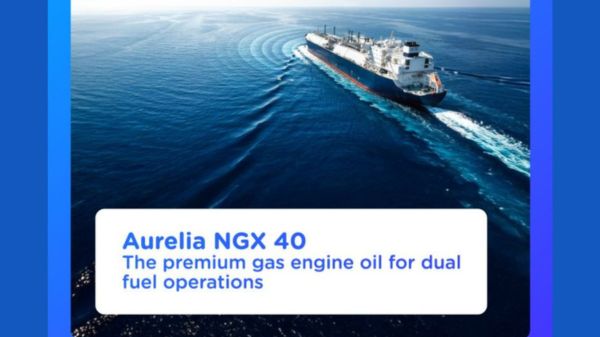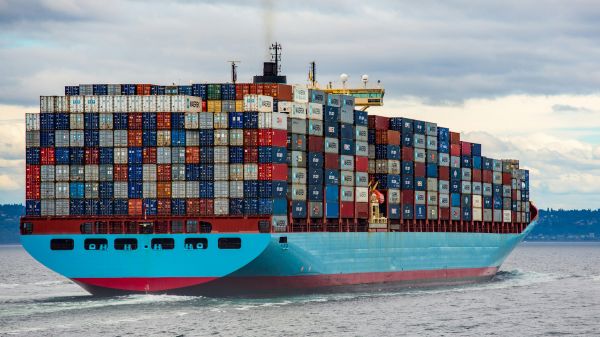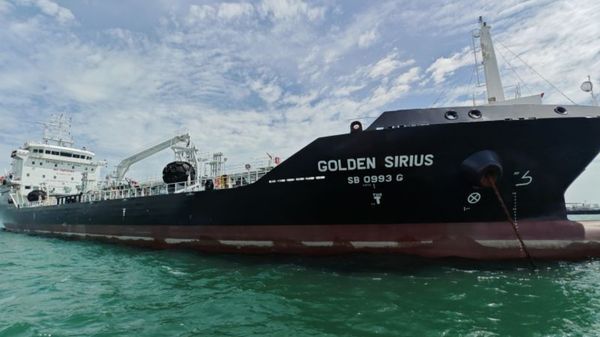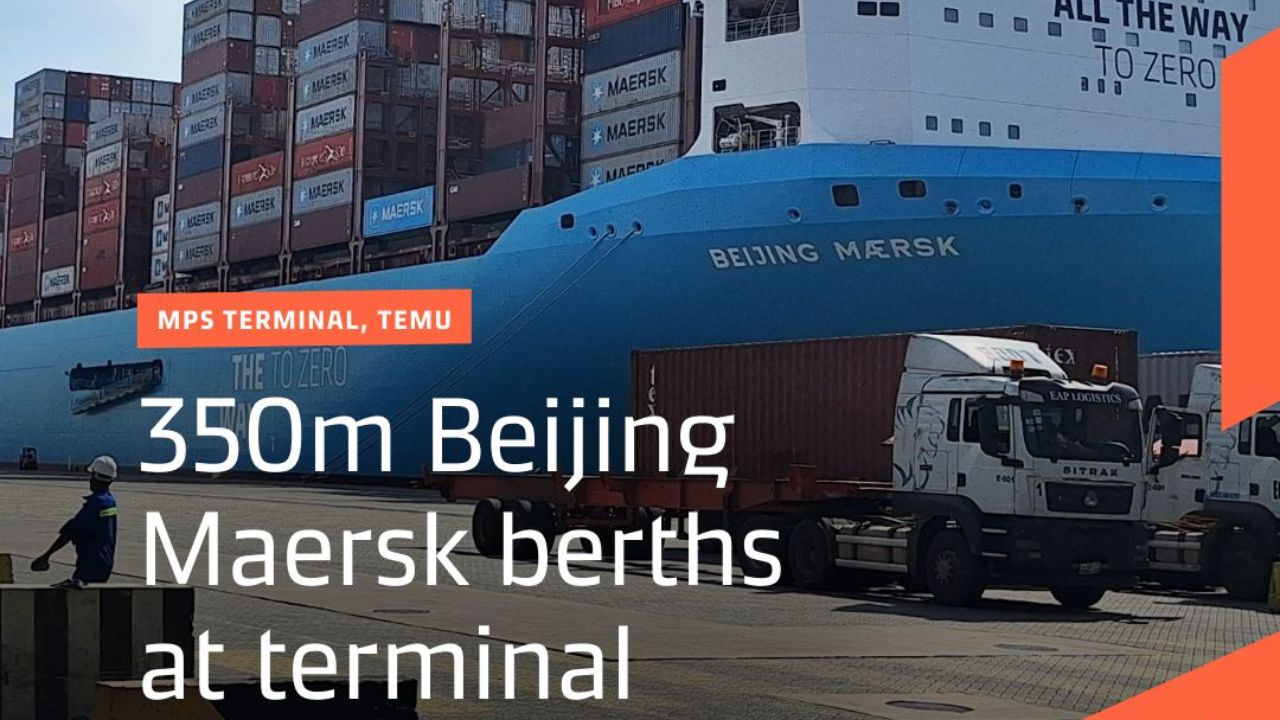Overall confidence levels in the shipping industry fell in the three months ended August 2012 to their lowest level in over three years, according to the latest Shipping Confidence Survey from international accountant and shipping adviser Moore Stephens. The fall, to the lowest figure recorded since the survey was launched in May 2008, comes after three successive quarters of improved confidence. Chief among the concerns raised by respondents to the survey were the glut of newbuildings coming onto the market and continuing uncertainty about the global economy.
In August 2012, the average confidence level expressed by respondents in the markets in which they operate was 5.3 on a scale of 1 (low) to 10 (high), compared to the figure of 5.7 recorded in the previous survey in May 2012, and identical to the figure posted one year previously, in August 2011. The survey was launched in May 2008 with a confidence rating of 6.8.
Charterers were the only category of respondent to report an increase in confidence over the three-month period. Having been the least confident of all categories of respondent in the previous survey, their confidence rating this time of 5.7 (compared to 5.0 in May 2012) was second only to the 5.9 recorded by managers, which itself was down from 6.0 last time. Owners’ confidence was down from 5.6 to 5.1, the lowest rating in the life of the survey for this category of respondent. Brokers also plumbed their all-time low in the survey ratings, with confidence levels down from 5.2 to 5.0 this time. Geographically, confidence in Asia hit a new survey low of 5.4 (down from 5.7 last time), while in Europe it was down from 5.6 to 5.2.
The feelings of large numbers of respondents were succinctly captured by the comments of one in particular, who said, “It is hard to be confident at the moment. Companies are burning up cash reserves at a frightening rate, given the appalling earnings currently on offer. Supply trends are still very negative. Banks are increasingly reluctant to put out any money, let alone new money, except in very specific sectors. The economic outlook, particularly in Europe, is dismal, while China looks increasingly likely to suffer a hard landing. Let’s hope that the darkest hour really is just before the dawn.” Another said, “It is astonishing that a whole industry has been misreading the markets, which has led to the prospect of excess building capacity for years and years to come, based on wrong assumptions by analysts.”
Overtonnaging was uppermost in the minds of many respondents, typified by the comment that, “The shipping market will remain difficult for the next few years. More owners are now tempted to order new ships as building prices will be at their lowest level for many years. Shipyards and governments will do everything they can to prevent the closure of yards, which will create very interesting special financing packages aimed at getting owners to order new ships. So the market will be flooded with more new vessels, extending the time it will take for the industry to recover.”
Another respondent said, “The only glimmer of hope is that we are approaching the limit of shipyards’ comfort zones. Yard overcapacity will become evident in the next twelve months and there will be fierce competition, even between established yards, to win new orders, which should drive prices to new lows and possibly force yards to come up with new designs.”
Elsewhere it was noted that, “The expectation of a reduction in tonnage by 2015/2016, as a result of twenty per cent of the world fleet being more than fifteen years old and therefore finding it difficult to pick up cargoes in many ports, was expected to have a positive effect on charter rates. But, with Greek owners reported to have booked over 400 vessels in Korean yards, excess tonnage is likely to keep the pressure on freight rates, and we shouldn’t expect to see any improvement for the next five years.”
The combination of political and economic uncertainty and depressed shipping markets was a dominant theme in many responses to the survey. “The recovery of the shipping industry,” said one respondent, “will depend on the recovery of European economies from financial crises, on the amount of new tonnage coming onto the market, and on the development of China’s import and export markets. The current stagnant situation is unlikely to change within the next twelve months.”
Other respondents, however, saw potential advantages in the current situation, with one predicting, “Security held in long-term contracts, together with opportunities to benefit from lower newbuilding costs and the exploitation of new government regulations, makes for a healthy outlook.”
The banks also featured in a number of responses to the survey. “The accelerating withdrawal of banks from the shipping finance market is effectively depressing ship values,” said one respondent. “This is not a short-term cycle, and we anticipate that bank finance for medium-size owners and fleets will be largely unavailable for some years yet. This is another example of banking problems penalising a vital industrial sector.”
The likelihood of respondents making a major investment or significant development over the next twelve months remained stable, on a scale of 1 to 10, at 5.3, which is the highest figure since the 5.6 recorded in May 2011. Owners (down from 5.6 to 5.3) were less confident in this regard than in our previous survey, while the expectations of managers and charterers remained unchanged at 5.5 and 5.8 respectively. 45 per cent of charterers (unchanged from the previous survey), 36 per cent of owners (down from 40 per cent last time) and 45 per cent of managers (up from 40 per cent), assessed the likelihood of their making an investment at 7.0 out of 10.0 or higher. Geographically, expectation levels of major investments were up in Asia, from 5.2 to 5.3, but down in Europe, from 5.3 to 5.2. The biggest increase was in North America, up from 4.5 to 5.7.
Demand trends, competition and finance costs once again featured as the top three factors cited by respondents overall as those likely to influence performance most significantly over the coming twelve months. The numbers were up for demand trends (from 21 per cent to 22 per cent) and for finance costs (16 to 17 per cent), but down in the case of competition, from 18 per cent to 17 per cent. Tonnage supply, up by 3 percentage points to 14 per cent, featured in fourth place, overtaking fuel costs, down from 14 per cent to 12 per cent. Operating costs were down, too, from 12 per cent to 10 per cent.
Demand trends remained the number one performance-affecting factor for owners, up from 21 per cent to 24 per cent. Tonnage supply featured in second place at 19 per cent, followed by finance costs, down one percentage point to 17 per cent. For managers, too, demand trends featured in first place (up from 18 per cent to 20 per cent), followed by finance costs (up from 17 per cent to 18 per cent), with competition (down 3 percentage points to 15 per cent) in third place. For charterers, demand trends (up 6 percentage points to 27 per cent) supplanted fuel costs (down to second place from 26 per cent to 19 per cent) as the number one performance-affecting factor, with tonnage supply in third place at 14 per cent.
Geographically, demand trends remained the most significant factor for respondents in both Europe (up from 21 per cent to 23 per cent) and in Asia (down from 24 per cent to 21 per cent). In Europe, finance costs (unchanged at 19 per cent) featured in second place, ahead of competition (down 2 percentage points to 16 per cent). In Asia, meanwhile, it was competition which featured in second place, despite being down 2 percentage points to 16 per cent, ahead of fuel costs, static at 16 per cent.
Demand trends were a dominant feature of the responses to the survey. One respondent quipped, “Low dry bulk rates and very low tanker rates, more ships to come into a relatively modern fleet, cheap newbuildings, poor demand outlook - what's to like?”
There was a 7 percentage point fall (from 51 per cent to 44 per cent) in the number of respondents overall who expected finance costs to increase over the next twelve months. This is the lowest level since the same figure was recorded in November 2010, and the second-lowest figure in the life of the survey to date, behind the 42 per cent recorded in August 2010. While the number of charterers who thought that finance costs would increase rose by 18 percentage points to 52 per cent, owners and managers were thinking along different lines. 39 per cent of owners (the second-lowest since the survey was launched, behind only the 37 per cent recorded in August 2010) were expecting costlier finance, as opposed to 54 per cent in May this year, while the 46 per cent of managers who thought likewise (again, the second lowest figure returned in the life of the survey to date) was 6 percentage points down on last time.
Once again, charterers, unsurprisingly, differed from owners and managers generally in their views about rates in the three main categories of tonnage covered by the survey. In the tanker sector, the number of respondents overall who thought that rates would increase over the next twelve months was down by 6 percentage points on the last survey, to 34 per cent. There was a reversal of the situation recorded in the previous survey, when there was an increased expectation of higher rates in the tanker sector by owners and managers, but not by charterers. This time, owners and managers (down from 41 per cent to 33 per cent, and from 41 per cent to 27 per cent, respectively) were much less confident of rate increases. For managers, this is the lowest figure recorded since the 18 per cent returned in October 2008. But, in the case of charterers, the number expecting improved rates was up to 47 per cent from 18 per cent last time. Geographically, the prospects for higher tanker rates were deemed lower by respondents in Asia (down from 36 per cent to 34 per cent), Europe (down from 41 per cent to 33 per cent) and North America (down from 52 per cent to 44 per cent).
In the dry bulk sector, meanwhile, there was a one percentage point fall, to 34 per cent, in the overall numbers of those anticipating rate increases. Again, owners (down 3 percentage points to 33 per cent) and managers (down to 35 per cent from 38 per cent) were less confident of rate increases than they were in the previous survey. But 35 per cent of charterers anticipated improved rates, compared to just 15 per cent last time. In Europe, there was a 2 percentage point increase, to 36 per cent, in expectations of higher dry bulk rates, which meanwhile remained unchanged in Asia at 33 per cent.
In the container ship market, there was a 2 percentage point fall overall, to 32 per cent, in the numbers expecting rates to go up. In the previous survey, the number of respondents anticipating higher rates over the coming year was up in all categories of respondent. This time, it was down in all categories, with the exception of owners and charterers. The number of charterers predicting higher rates was up to 47 per cent (from 41 per cent previously) to its highest level since the survey was launched in May 2008 with a corresponding figure of 50 per cent. In the case of owners, there was a 2 percentage point increase to 37 per cent, but the number of managers expecting improved rates was down by 5 percentage points to 26 per cent. Expectations of improved rates were up in Asia (from 28 per cent to 30 per cent) and in North America (from 39 per cent to 41 per cent) but down in Europe by 4 percentage points to 34 per cent.
Moore Stephens shipping partner, Richard Greiner, said, “The fall in confidence recorded in our latest survey is clearly a disappointment. But it cannot really be termed a surprise. In some respects, shipping has been bucking the trend for the past twelve months, exhibiting increased confidence despite the political and financial woes in Europe and elsewhere, and the problems of overtonnaging and falling rates.
“Unless you are a charterer, it is difficult to find too many operators who believe that rates in the main trades are likely to move upwards over the coming twelve months. Given that it is unlikely that charterers know anything that the rest of the market does not, it will, as always, be market forces which ultimately dictate the winners and losers. Clearly, tonnage supply - both actual and incipient - currently exceeds demand in most trades. Increased scrapping will help, but it will still be necessary to renegotiate commercial arrangements.
“Meanwhile, good, long-term contracts with reliable business partners are as good as money in the bank, and better in many respects. Shipping has always been a mixture of long-term and short-term business, the lading and the tramp! That does not change even in a depressed market such as the one we are currently operating in. Lower newbuilding costs do nothing to address the current tonnage overhang, but they do provide an opportunity for those with access to cash, a viable business plan and a secure level of demand to fill. Furthermore, the leaner market left in the wake of the disappearance of those operators unable to survive the economic downturn does at least offer up the prospect of a more viable industry for the future.
“Among other, isolated pieces of good news to emerge from the survey was the fact that respondents overall expected expenditure on fuel to be a less significant influence on their overall performance than they did previously. This may be no more than a temporary reprieve, but it will be welcome nonetheless. Fuel and crew costs will continue to be a major expenditure for owners and operators for the foreseeable future. They are costs which will not go down in real terms, like all other costs facing the industry. In truth, the only costs which ever seem to go down are the costs of shipping itself. Shipping is an industry which is often accused of undervaluing and underselling itself. There is a lot of empirical evidence to back this up, not least the over-simplistic but nonetheless powerful anecdote about the enormous gap between the cost of shipping brand-name trainers from the Far East, and the retail price of those trainers in western markets.
“The problem for today’s shipping industry is having the nerve, the wherewithal and the financial backing to sell its expertise and service at a self-supporting price. You don’t have to be John Kenneth Galbraith to work this one out. But while the prospects for recovery in the shipping markets depend to a large extent on a resolution of the debt crisis in Europe and elsewhere, there are issues closer to home which shipping can address, and which will both carry it over the current crisis and position it properly in the more stable market which will hopefully emerge. Quite when that will be is a question which might have defeated Galbraith himself.”










